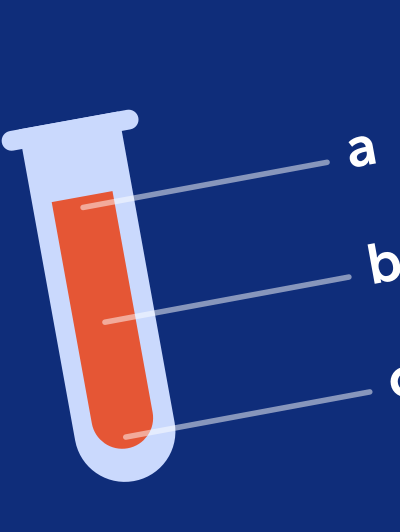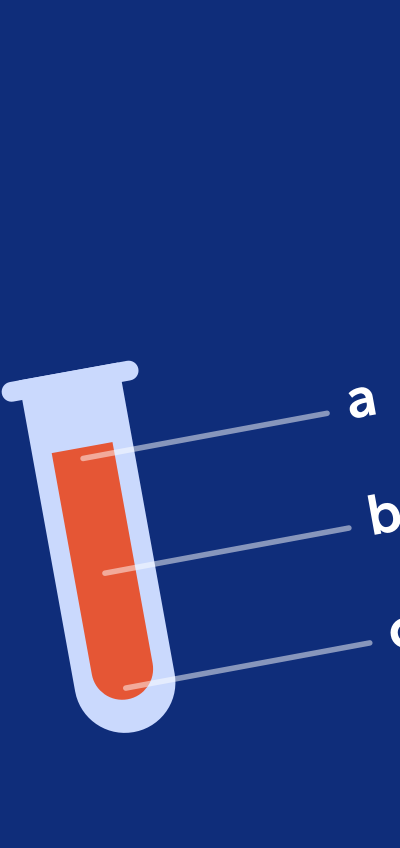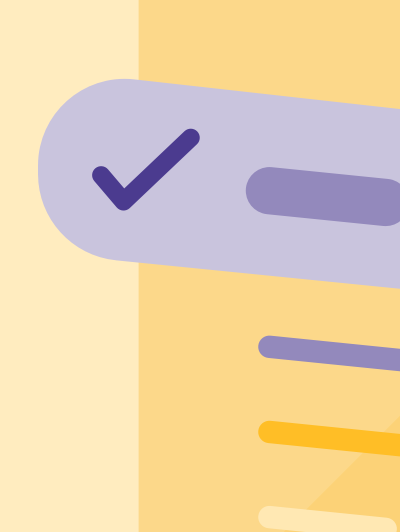
The Daily NCLEX® Challenge is the easiest way to ace your NCLEX exam the first time! Join today, and access 7 days of Premium for free.
Sign up now to receive your first challenge →
You’ve known you need to study for the NCLEX since the day you started nursing school. Only now, the reality that you’re getting closer to actually having to take it is really sinking in. Now how does that make you feel? Nervous, scared, excited …. maybe a combination of all of these emotions?
If these feelings describe you, you’re not alone. Virtually every nursing student who’s inching closer to graduation faces this same reality. But with a thought-out plan for studying, you can walk into the NCLEX testing center with confidence.
The secret here is that answering an NCLEX question of the day is one of the best ways to prepare yourself for the exam. Since your goal is to pass the NCLEX and begin your nursing career, let’s jump right into the value of studying each day, particularly the value of doing an NCLEX question of the day. We’ll also show you some sample NCLEX exam questions with rationales to get you started.
The NCLEX is a culmination of your years in nursing school combined into one final exam. While that might sound overwhelming, it really doesn’t have to be. With the NCLEX, consistent, daily effort has a powerful impact on how successful you can be.
But that effort shouldn’t be brutal or take hours a day. Redirecting your focus to NCLEX practice questions not only improves your test-taking skills but also improves your knowledge base at the same time.

Still not convinced? We’ve compiled a list of the top 10 reasons why you shouldn’t skip answering an NCLEX question of the day.
Doing a daily NCLEX question gives your critical thinking skills a major boost. The NCLEX’s testing format doesn’t just want to test how much you know. The goal of the NCLEX is to see how you can apply your knowledge to solve complex problems. You see, you can have a bank of knowledge inside your head, but if you can’t apply it and think critically, it’s not much use outside of a lecture hall.
Doing an NCLEX question of the day gets your brain primed for developing your critical thinking skills. In addition, the repetition of doing this daily ensures that you’re being continually challenged in new ways.
The benefits of answering daily NCLEX practice questions goes beyond the exam itself. If you can get to a point where you can quickly and accurately answer most of the questions, that success rolls over into clinical settings. This is crucial because as an RN or LPN, your job and patients’ well-being is dependent upon your clinical skills. When they’re sharpened, your ability to make decisions in fast-paced clinical environments skyrockets — something both your instructors and your future employer will appreciate.
An NCLEX question of the day helps you learn how to take tests the NCLEX way. You’re able to see how the NCLEX wants nurses to think which improves your odds of passing the real exam. The NCLEX uses computerized adaptive testing (CAT). CAT is a style of testing where everybody isn’t getting the exact same exams. This is because the computer constantly reassesses your individual knowledge by giving you new questions based on how you answered the previous questions.
The National Council of State Boards of Nursing (NCSBN) has a great video explaining in-depth how CAT works. All in all, this sophisticated computerized testing yields results that more accurately reflect your ability to perform safe patient care than a standard paper exam. The more you practice this unique style of testing, the more you’ll have an understanding of how it’s laid out and what to expect.
Answering an NCLEX question of the day every day helps you become used to this particular style of testing. As you answer each day and learn from what you got right and wrong, the confidence you have in your own testing abilities naturally increases.
Going into an important exam like the NCLEX can feel foreign because it’s unlike any other exam you’ve had to take. The location and environment are different than what you’re likely used to. So knowing what to expect by answering an NCLEX question of the day each day decreases frustration and surprises on test day — leaving you relieved and happy that you already know how the questions are set up and how to answer them.
As you may know, the NCLEX-RN and NCLEX-PN are timed exams meaning you don’t get as long as you want to test. While the overwhelming majority of people don’t take the maximum amount of questions and time, it’s still important to be prepared for all testing scenarios. Consistent NCLEX prep including an NCLEX question of the day helps you be better able to eliminate wrong answers so that you can more easily find the correct answer.
After you answer your NCLEX question of the day, you can use the answer rationales to gain a better understanding of why each option was right or wrong. These rationales are really worth their weight in gold because they explain things in a way that you may not have thought of or in a way that opens your eyes to a new way of thinking. Even if you get the answer correct, don’t skip reading the rationale. You can always improve and deepen your understanding of the nursing world.
Answering an NCLEX question of the day helps you see where you’re struggling in more ways than one. That’s because you might be putting your study focus on certain nursing topics when you really may need to focus on answering different types of NCLEX questions or vice versa. A daily question challenges you to apply what you know and see where you need to improve.
For some test prep help, check out these handy tips for how to answer NCLEX-style questions such as rewording questions, prioritizing, and answering before reading the choices. These tips can help you improve how you study and how you answer NCLEX questions.
Taking time out of your day, every day, to study with things like flashcards, an NCLEX question of the day, and study guides challenges you in many ways. All of these things help you to be a better student, both as a student nurse and as a practicing nurse. Building effective study habits like not cramming, not procrastinating, and avoiding distractions makes you a better nursing student which in turn makes school feel easier for you.
In addition, even veteran nurses are continuing to learn as the medical world is never stagnant. There are always new technologies, procedures, and ways of doing things that nurses must constantly adapt to. Being a better student really has lifelong benefits for you as a nurse.
Last but not least, answering an NCLEX question of the day significantly increases your odds of passing the NCLEX exam. Who doesn’t want that? That’s the ultimate goal of every graduating nurse. Taking studying seriously now won’t ever be anything you regret. So go ahead and get started today.

Here are a few sample multiple-choice NCLEX questions to flex your brain muscles and get you prepared for NCLEX-style questions.
NCLEX Practice Question #1

The telemetry nurse notices the patient’s cardiac monitor displaying this cardiac rhythm:
Which actions does the nurse perform in response to this rhythm? (Select all that apply)
Answer: 1, 2, 4, 5 — Verifying lead placement (option 1) will determine if this rhythm is accurate. The nurse should assess the patient when the cardiac monitor shows bigeminy (option 2). Bigeminy is not a lethal rhythm but does signify a conduction problem that warrants further investigation (option 3). Electrolyte imbalances can display ectopic beats (option 4). The nurse should inform the health care provider of this rhythm so that further investigation can be performed (option 5). This is not a “normal” rhythm and should be notified to the health care provider (option 6).
NCLEX Practice Question #2
The patient has become unresponsive and is now classified as a medical emergency. (In order, please arrange the steps for how the nurse will administer CPR and use an AED. All options must be used.)
Answer: Correct order:
Rationale:
NCLEX Practice Question #3
The client is diagnosed with sepsis and is now reporting being “short of breath.” The nurse reviews lab work which shows a WBC of 26 and an ABG showing acute respiratory alkalosis. Which prescription(s) by the health care provider will the nurse anticipate related to these patient’s signs and symptoms? (Select all that apply)
Answer: Answer 1, 2, 3, 4 — The patient is showing signs of acute respiratory distress syndrome. ARDS is often seen 6 to 72 hours after an inciting event (such as sepsis). The nurse should expect the health care provider to prescribe a PTT and a D dimer lab for evidence of disseminated intravascular coagulopathy (option 1). Imaging will confirm ARDS with a chest radiograph (option 2) showing bilateral diffuse alveolar opacities with dependent atelectasis. The patient will need high concentration oxygen therapy (option 3) and positive end pressure (PEEP) therapy (option 4). Nosocomial infections and barotrauma are complications of ARDS due to prolonged treatment on antibiotics and PEEP. Critically ill patients such as those diagnosed with sepsis and ARDS are at high risk for deep venous thrombosis and should be kept on DVT prevention measures (option 5).
NCLEX Practice Question #4
The nurse is assessing a patient on 4 liters nasal cannula. The current Sp02 level on the left index finger is measuring 79%. (In order, please arrange the steps for how the nurse will troubleshoot the Sp02 monitor and oxygen measurements. All options must be used.)
Answer: Correct Order:
Rationale:

Let’s uplevel your studying with an NCLEX question of the day. Here at Daily NCLEX Challenge, we know firsthand the importance of NCLEX practice questions. That’s why we created a fun, interactive way to get your studying in.
Each day you get an email with a new NCLEX challenge to train your brain. If you opt for the premium version for just $5 a month, you’ll get access to answer rationales, compete against your friends and other students, and get to move up the leaderboard to compete for some awesome nursing-related prizes.
Studying doesn’t need to be boring. Pump some fun into the experience with Daily NCLEX Challenge.
If you are still in nursing school, use these strategies and tips on your nursing exams.
Continue reading

There are always a few more things you can squeeze in last minute to boost your chances of passing.
Continue reading
